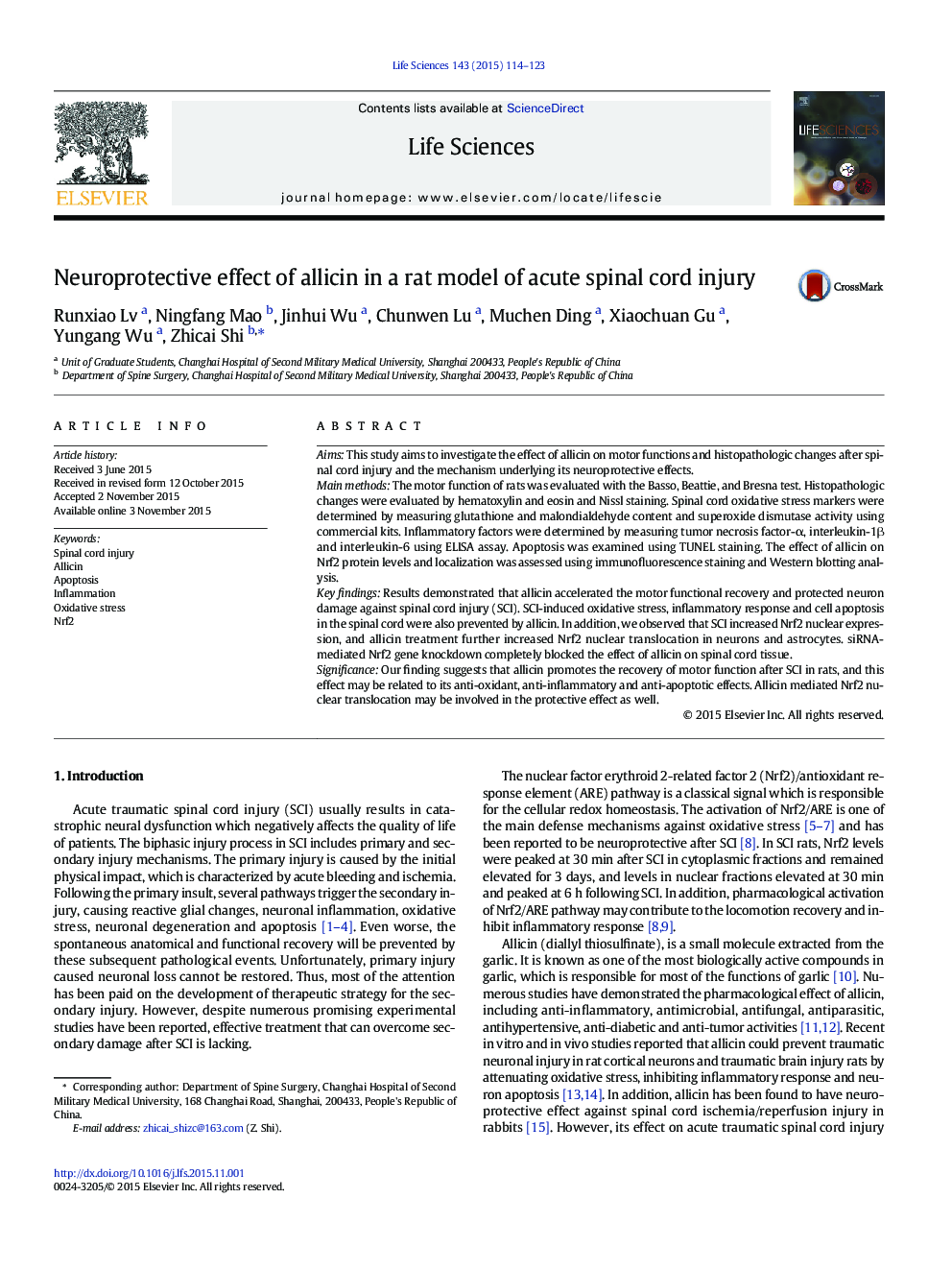| Article ID | Journal | Published Year | Pages | File Type |
|---|---|---|---|---|
| 2550706 | Life Sciences | 2015 | 10 Pages |
AimsThis study aims to investigate the effect of allicin on motor functions and histopathologic changes after spinal cord injury and the mechanism underlying its neuroprotective effects.Main methodsThe motor function of rats was evaluated with the Basso, Beattie, and Bresna test. Histopathologic changes were evaluated by hematoxylin and eosin and Nissl staining. Spinal cord oxidative stress markers were determined by measuring glutathione and malondialdehyde content and superoxide dismutase activity using commercial kits. Inflammatory factors were determined by measuring tumor necrosis factor-α, interleukin-1β and interleukin-6 using ELISA assay. Apoptosis was examined using TUNEL staining. The effect of allicin on Nrf2 protein levels and localization was assessed using immunofluorescence staining and Western blotting analysis.Key findingsResults demonstrated that allicin accelerated the motor functional recovery and protected neuron damage against spinal cord injury (SCI). SCI-induced oxidative stress, inflammatory response and cell apoptosis in the spinal cord were also prevented by allicin. In addition, we observed that SCI increased Nrf2 nuclear expression, and allicin treatment further increased Nrf2 nuclear translocation in neurons and astrocytes. siRNA-mediated Nrf2 gene knockdown completely blocked the effect of allicin on spinal cord tissue.SignificanceOur finding suggests that allicin promotes the recovery of motor function after SCI in rats, and this effect may be related to its anti-oxidant, anti-inflammatory and anti-apoptotic effects. Allicin mediated Nrf2 nuclear translocation may be involved in the protective effect as well.
